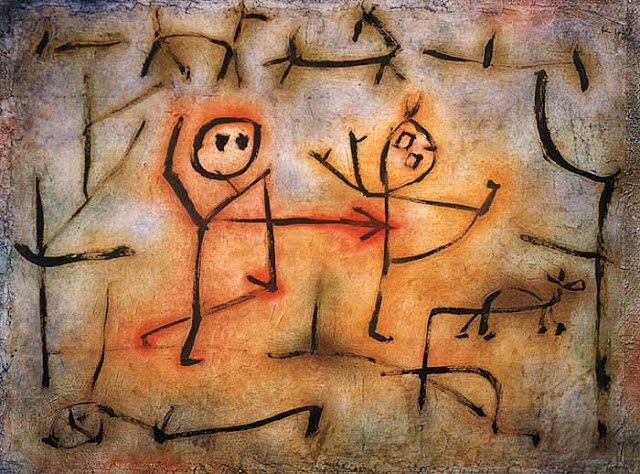Paul Klee (18 December 1879 – 29 June 1940) was a Swiss-German artist. His highly individual style was influenced by movements in art that included Expressionism, Cubism, and Surrealism. Klee was a natural draftsman who experimented with and eventually deeply explored color theory, writing about it extensively; his lectures Writings on Form and Design Theory (Schriften zur Form und Gestaltungslehre), published in English as the Paul Klee Notebooks, are held to be as important for modern art as Leonardo da Vinci's A Treatise on Painting for the Renaissance.He and his colleague, Russian painter Wassily Kandinsky, both taught at the Bauhaus school of art, design and architecture. His works reflect his dry humor and his sometimes childlike perspective, his personal moods and beliefs, and his musicality.
Klee has been variously associated with Expressionism, Cubism, Futurism, Surrealism, and Abstraction, but his pictures are difficult to classify. He generally worked in isolation from his peers, and interpreted new art trends in his own way. He was inventive in his methods and technique. Klee worked in many different media—oil paint, watercolor, ink, pastel, etching, and others. He often combined them into one work. He used canvas, burlap, muslin, linen, gauze, cardboard, metal foils, fabric, wallpaper, and newsprint. Klee employed spray paint, knife application, stamping, glazing, and impasto, and mixed media such as oil with watercolor, watercolor with pen and India ink, and oil with tempera.
He was a natural draftsman, and through long experimentation developed a mastery of color and tonality. Many of his works combine these skills. He uses a great variety of color palettes from nearly monochromatic to highly polychromatic. His works often have a fragile childlike quality to them and are usually on a small scale. He often used geometric forms as well as letters, numbers, and arrows, and combined them with figures of animals and people. Some works were completely abstract. Many of his works and their titles reflect his dry humor and varying moods; some express political convictions. They frequently allude to poetry, music and dreams and sometimes include words or musical notation. The later works are distinguished by spidery hieroglyph-like symbols. Rainer Maria Rilke wrote about Klee in 1921, "Even if you hadn’t told me he plays the violin, I would have guessed that on many occasions his drawings were transcriptions of music."
Pamela Kort observed: "Klee's 1933 drawings present their beholder with an unparalleled opportunity to glimpse a central aspect of his aesthetics that has remained largely unappreciated: his lifelong concern with the possibilities of parody and wit. Herein lies their real significance, particularly for an audience unaware that Klee's art has political dimensions."Wikipedia
Pamela Kort observed: "Klee's 1933 drawings present their beholder with an unparalleled opportunity to glimpse a central aspect of his aesthetics that has remained largely unappreciated: his lifelong concern with the possibilities of parody and wit. Herein lies their real significance, particularly for an audience unaware that Klee's art has political dimensions."Wikipedia










No comments:
Post a Comment